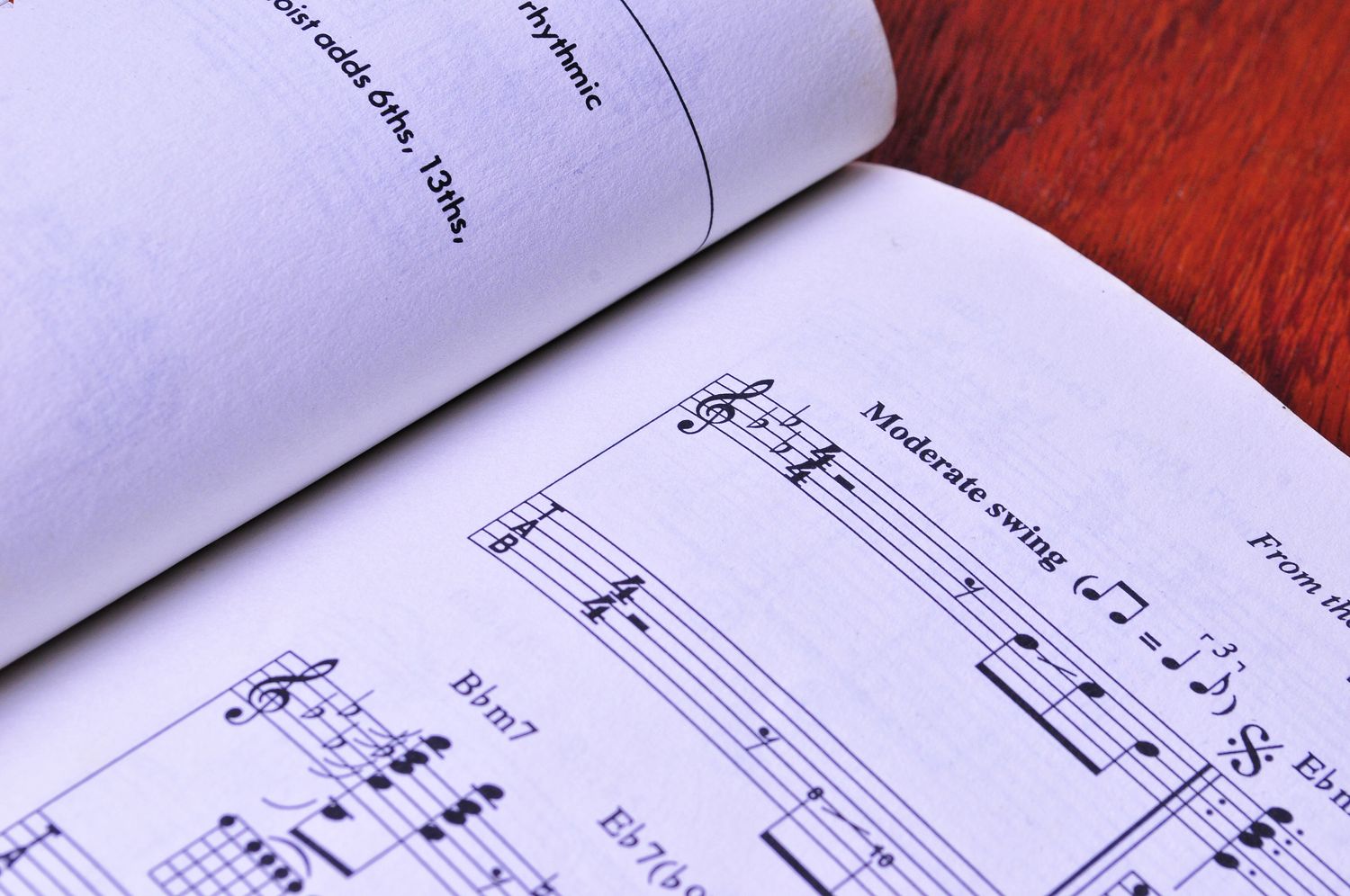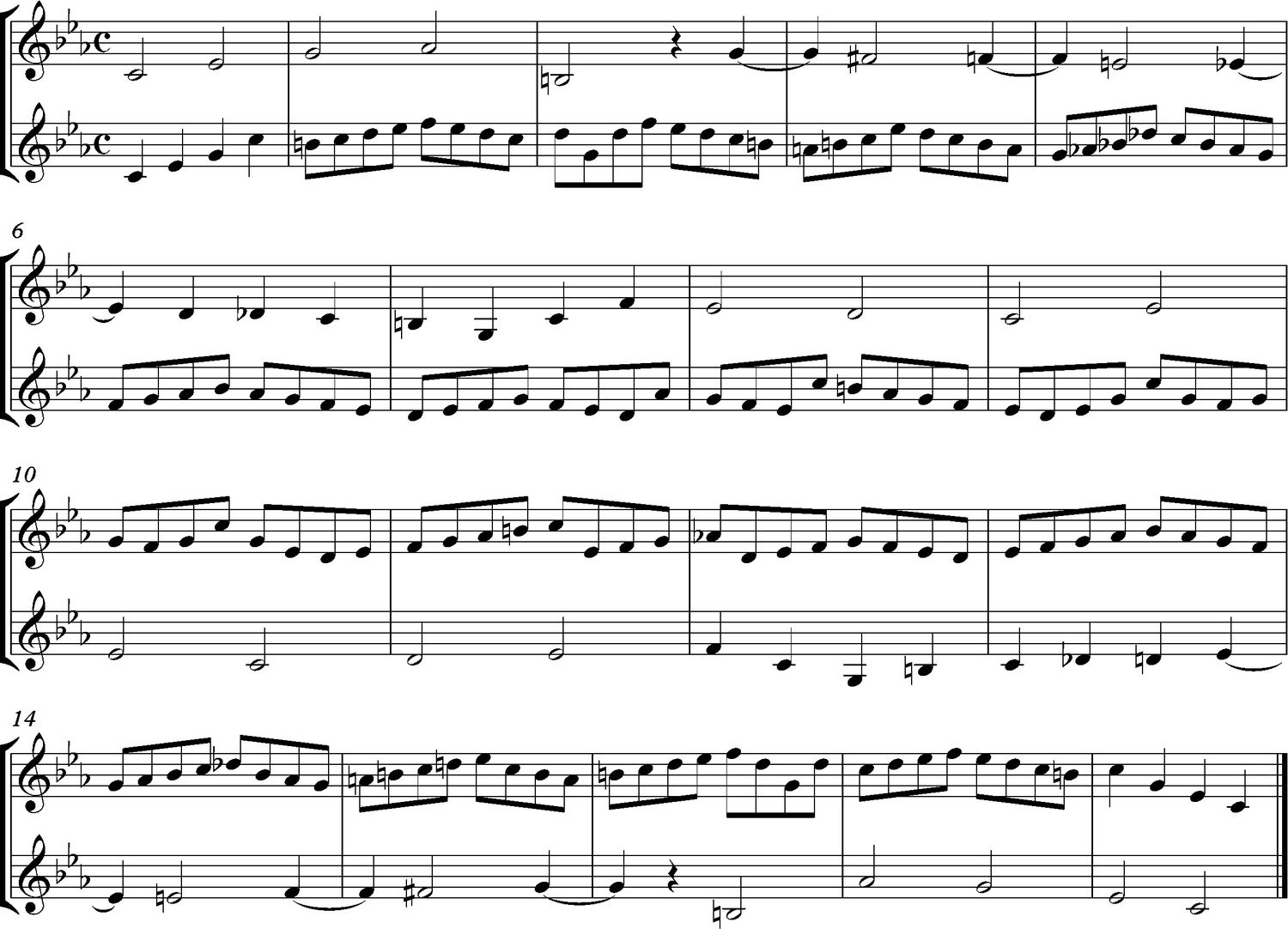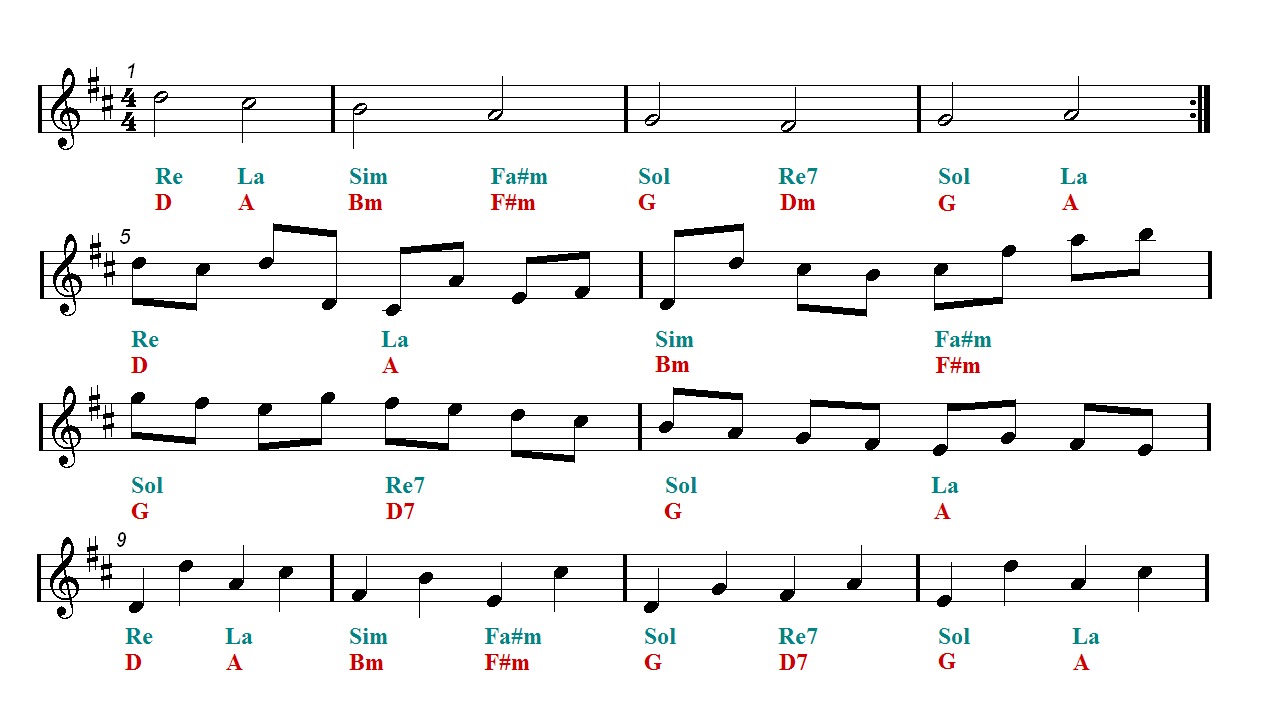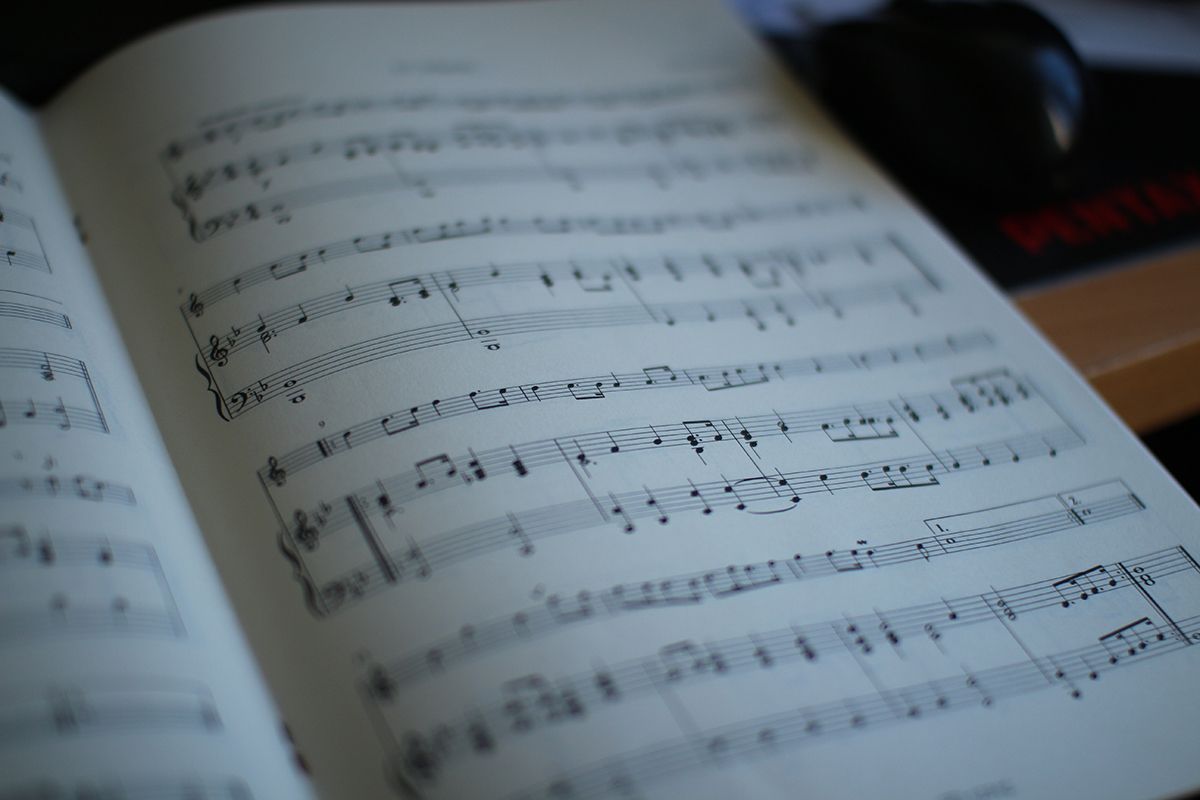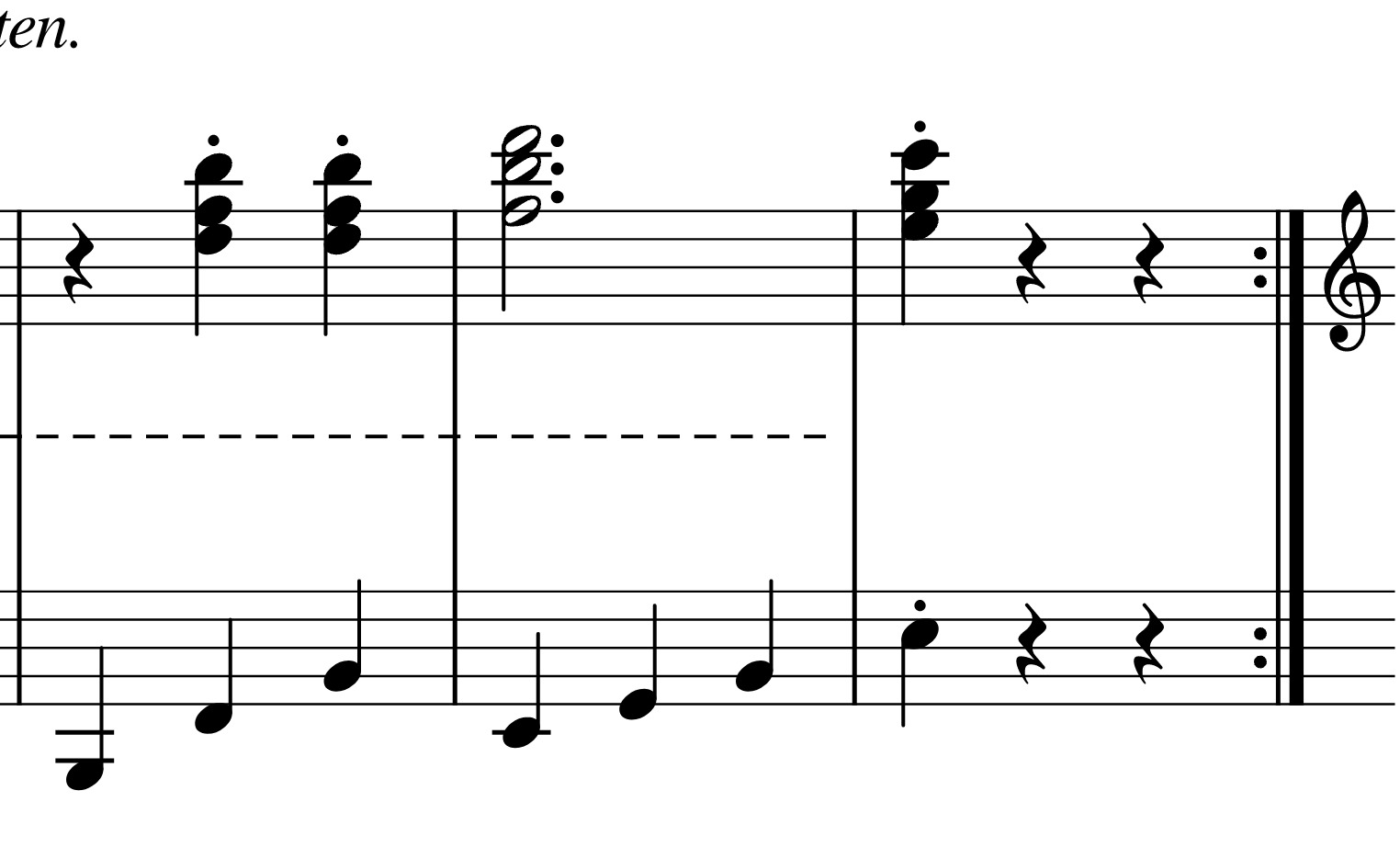Home>Production & Technology>Music Theory>What Is The Definition Of A Direct Modulation In Music Theory


Music Theory
What Is The Definition Of A Direct Modulation In Music Theory
Published: January 29, 2024
Learn the definition of direct modulation in music theory and explore how it is used to transition between different keys. Enhance your understanding of music theory with this comprehensive guide.
(Many of the links in this article redirect to a specific reviewed product. Your purchase of these products through affiliate links helps to generate commission for AudioLover.com, at no extra cost. Learn more)
Table of Contents
Introduction
Welcome to the world of music theory, where the building blocks of harmony, melody, and rhythm come together to create beautiful compositions. One fundamental concept in music theory is modulation, which adds variety and interest to a piece by shifting to a different key. Modulation can be achieved through various techniques, one of which is direct modulation.
In this article, we will delve into the definition of direct modulation, explore examples of its usage, discuss its advantages and disadvantages, and highlight some common techniques used in direct modulation.
Direct modulation is an essential tool that composers and musicians use to transition smoothly from one key to another within a composition. It allows for a change in tonality, resulting in a shift in the overall mood and emotional impact of the music. Whether it’s a sudden shift or a gradual transition, direct modulation provides a way to keep the listener engaged and surprised.
As you immerse yourself in the world of music theory, understanding and recognizing direct modulation will open up new possibilities for your compositions and help you appreciate the intricacies of the music you listen to. So, let’s dive deeper into the concept of direct modulation and explore its fascinating aspects.
Understanding Modulation in Music Theory
Before diving into the specifics of direct modulation, it’s important to have a solid understanding of modulation in general. Modulation is the process of changing from one key to another within a musical composition. It introduces a sense of movement and progression, allowing composers to explore different tonalities and create a dynamic musical journey.
Modulation serves several purposes in music. It adds variety and contrast, preventing a composition from sounding monotonous. It can also evoke different emotions and moods, depending on the new key that is introduced. Modulating to a higher key can create a sense of brightness and excitement, while modulating to a lower key can bring a sense of depth and introspection.
When modulating, composers carefully choose the key they want to transition to in order to achieve the desired effect. The choice of the new key depends on factors such as the overall structure and theme of the composition, the emotional impact the composer wants to convey, and the relationship between the current key and the new key.
There are different modulation techniques used in music theory, including direct modulation, which we will focus on in this article. Direct modulation involves an immediate change from one key to another, without any intermediary steps or transition chords. It offers a straightforward and bold way to shift the tonality and capture the listener’s attention.
Now that we have a general understanding of modulation, let’s explore direct modulation in more detail.
Direct Modulation Defined
Direct modulation, also known as abrupt modulation, is a technique in music theory where a composition shifts from one key to another without any transitional chords or extended sequences. It involves an immediate change in tonality, creating a sudden shift in the musical landscape. Unlike other modulation techniques that use intermediary chords to smoothly transition between keys, direct modulation provides a more assertive and dramatic effect.
Direct modulation can occur at any point in a musical piece, and the choice of the new key depends on the composer’s intent and artistic vision. The shift can be to a closely related key, such as the dominant or relative major/minor, or to a more distant key, which can create a greater sense of contrast and surprise.
One of the defining characteristics of direct modulation is the absence of any chords or musical elements that bridge the gap between the original key and the new key. This immediacy of change grabs the listener’s attention and adds a jolt of excitement to the composition. While direct modulation may seem abrupt, it can be used purposefully to create a specific musical effect or highlight a particular musical idea.
Direct modulation can be found in various musical genres and styles. It has been used across different time periods, from classical compositions to jazz and contemporary music. Composers and musicians employ direct modulation as a tool to inject energy, create tension or release, and add variety to their compositions.
Understanding direct modulation opens up new possibilities for composers, as it allows them to explore different tonalities and create unique musical moments. By incorporating direct modulation into their compositions, composers can surprise and captivate their audience, leading to a more engaging and memorable musical experience.
With the definition of direct modulation established, let’s move on to exploring some examples of its usage in practice.
Examples of Direct Modulation
Direct modulation is a versatile technique that can be found in a wide range of musical compositions across various genres. Let’s explore some notable examples of direct modulation:
- Beethoven’s Symphony No. 5: In the first movement of Beethoven’s iconic Symphony No. 5 in C minor, there is a powerful direct modulation from C minor to Eb major. This modulation occurs at a climactic moment, heightening the dramatic tension and introducing a new tonal color.
- The Beatles’ “A Day in the Life”: This iconic song by The Beatles showcases direct modulation in its bridge section. The song starts in the key of E major but transitions abruptly to G major for the bridge, creating a striking contrast and adding an unexpected twist to the composition.
- Frederic Chopin’s Nocturne in D-flat Major: In this romantic piano piece by Chopin, there is a beautiful direct modulation from D-flat major to A major in the middle section. This modulation adds a sense of brightness and opens up new harmonic possibilities, enhancing the emotional impact of the music.
- John Coltrane’s “Giant Steps”: Jazz saxophonist John Coltrane’s composition “Giant Steps” is known for its complex chord progressions and frequent direct modulations. The song features modulations between key centers that are a major third apart, creating a sense of harmonic tension and showcasing Coltrane’s bold musical vision.
- Queen’s “Bohemian Rhapsody”: This iconic rock anthem by Queen includes direct modulations throughout its various sections. The song moves between different keys seamlessly and unexpectedly, adding a sense of grandeur and theatricality to the composition.
These are just a few examples of how direct modulation has been used effectively in different musical contexts. Each of these examples demonstrates the power of direct modulation in creating musical impact, surprise, and emotion. As you explore more music, you will likely encounter many other instances of direct modulation in various genres and styles.
Now that we have explored some examples of direct modulation, let’s discuss the advantages and disadvantages of using this technique in musical compositions.
Advantages and Disadvantages of Direct Modulation
Direct modulation offers composers and musicians a range of advantages in their musical compositions. At the same time, it also presents certain challenges and limitations. Let’s take a closer look at the advantages and disadvantages of using direct modulation:
Advantages of Direct Modulation:
- Dramatic Impact: Direct modulation has a powerful and immediate effect on the listener. It can create a sudden change in mood, intensity, or emotion, adding a dramatic impact to the composition.
- Contrast and Variety: By shifting to a different key without any transitional chords, direct modulation introduces a sense of contrast and variety. It keeps the music interesting and prevents it from becoming predictable or monotonous.
- Emotional Effect: Direct modulation can evoke strong emotions and intensify the emotional journey of the composition. The sudden change in tonality can heighten the emotional impact and captivate the listener’s attention.
- Highlighting Musical Ideas: Direct modulation can be used strategically to emphasize specific musical ideas or sections. It creates a noticeable moment of change, drawing attention to certain musical passages or themes.
Disadvantages of Direct Modulation:
- Disruption of Flow: Direct modulation can disrupt the smooth flow of a composition, especially when used excessively or inappropriately. It can introduce a jarring effect that may not always be desirable, depending on the intended musical expression.
- Difficulty in Establishing Key Centers: Without the use of transitional chords, direct modulation can make it challenging for the listener to establish a clear sense of the new key. This may lead to a temporary disorientation or confusion in understanding the tonal structure of the piece.
- Limited Transition Options: Direct modulation limits the options for transitioning between keys. Unlike other modulation techniques that provide more gradual and subtle transitions, direct modulation relies on immediate shifts, which may not always suit the desired musical progression.
- Potential for Predictability: Direct modulation, when overused or employed predictably, can become a musical cliché. It may result in the audience anticipating the modulations, thereby reducing the element of surprise or impact.
It’s important for composers to consider the advantages and disadvantages of direct modulation when deciding to incorporate it into their compositions. A thoughtful and deliberate approach to the usage of direct modulation can help maximize its benefits and mitigate any potential drawbacks.
Now, let’s explore some common techniques used in direct modulation to create smooth transitions and enhance musical cohesion.
Common Techniques Used in Direct Modulation
While direct modulation involves an abrupt shift from one key to another, there are several techniques that composers use to create smooth transitions and maintain musical cohesion. These techniques help to bridge the gap between the original key and the new key, enhancing the overall musical experience. Let’s explore some common techniques used in direct modulation:
- Pivot Chords: Pivot chords are chords that exist in both the original key and the new key. By using a pivot chord, the composer establishes a harmonic connection between the two keys, providing a seamless transition. The pivot chord serves as a link that allows the listener to navigate smoothly from one tonality to another.
- Tonicization: Tonicization involves temporarily treating a chord from the new key as the tonic chord. This technique gives a sense of the new tonality before fully transitioning to the new key. Tonicization can create anticipation and prepare the listener for the upcoming modulation.
- Sequencing: Sequencing involves repeating a musical pattern or motif in a different key. By using sequential patterns, composers can introduce elements of the new key gradually, preparing the listener for the modulation. Sequencing creates a sense of familiarity and cohesion, easing the transition between keys.
- Chromatic Movement: Chromatic movement refers to using chromatic notes or chords to connect the two keys. By incorporating chromaticism, composers add tension and smoothness to the modulation, helping to bridge the gap between the original and new key. Chromatic movement provides a sense of continuity and progression.
- Modulation by Common Tone: Modulation by common tone involves sustaining or incorporating a common pitch or tone between the original key and the new key. This shared note acts as a link, providing a sense of familiarity and connection as the listener transitions to the new tonality.
By employing these techniques, composers can make direct modulation feel more seamless and natural. These methods enhance the listener’s experience by creating a sense of continuity and coherence, despite the sudden shift in tonality.
It’s worth noting that the choice of technique will depend on the specific musical context, the desired effect, and the stylistic conventions being employed. The skillful use of these techniques allows composers to execute direct modulation effectively and craft musical compositions that are both captivating and musically coherent.
Now, let’s summarize the key points we have discussed regarding direct modulation in music theory.
Conclusion
Direct modulation is a powerful technique in music theory that allows composers to create dramatic shifts in tonality, adding variety and emotional impact to their compositions. While direct modulation involves an immediate change from one key to another, it can be executed smoothly and effectively through the use of techniques such as pivot chords, tonicization, sequencing, chromatic movement, and modulation by common tone.
Direct modulation offers several advantages, including its ability to create a dramatic impact, introduce contrast and variety, evoke strong emotions, and highlight specific musical ideas. However, it also has its limitations, such as potentially disrupting the flow of a composition and making it challenging to establish key centers. Composers must consider these factors and use direct modulation thoughtfully to maximize its benefits.
Throughout history, direct modulation has been utilized in various musical genres and styles. From classical symphonies to jazz improvisations and contemporary rock anthems, direct modulation has played a significant role in capturing the listener’s attention and creating memorable musical moments.
As you delve deeper into the world of music theory, understanding direct modulation expands your compositional palette and opens up new possibilities for your musical expressions. By incorporating direct modulation into your compositions, you can surprise and captivate your audience, infusing your work with energy, emotion, and musical intrigue.
Remember, the choice to use direct modulation should be made purposefully, considering the overall structure and intent of your composition. By employing the appropriate techniques and maintaining a balance between creativity and musical cohesion, you can harness the power of direct modulation and create compositions that resonate deeply with your listeners.
So, embrace the art of direct modulation, explore its nuances, and let it become a valuable tool in your musical journey. As you continue to refine your skills and understanding of music theory, direct modulation will serve as a powerful tool to enhance your compositions and captivate the hearts and minds of your listeners.


